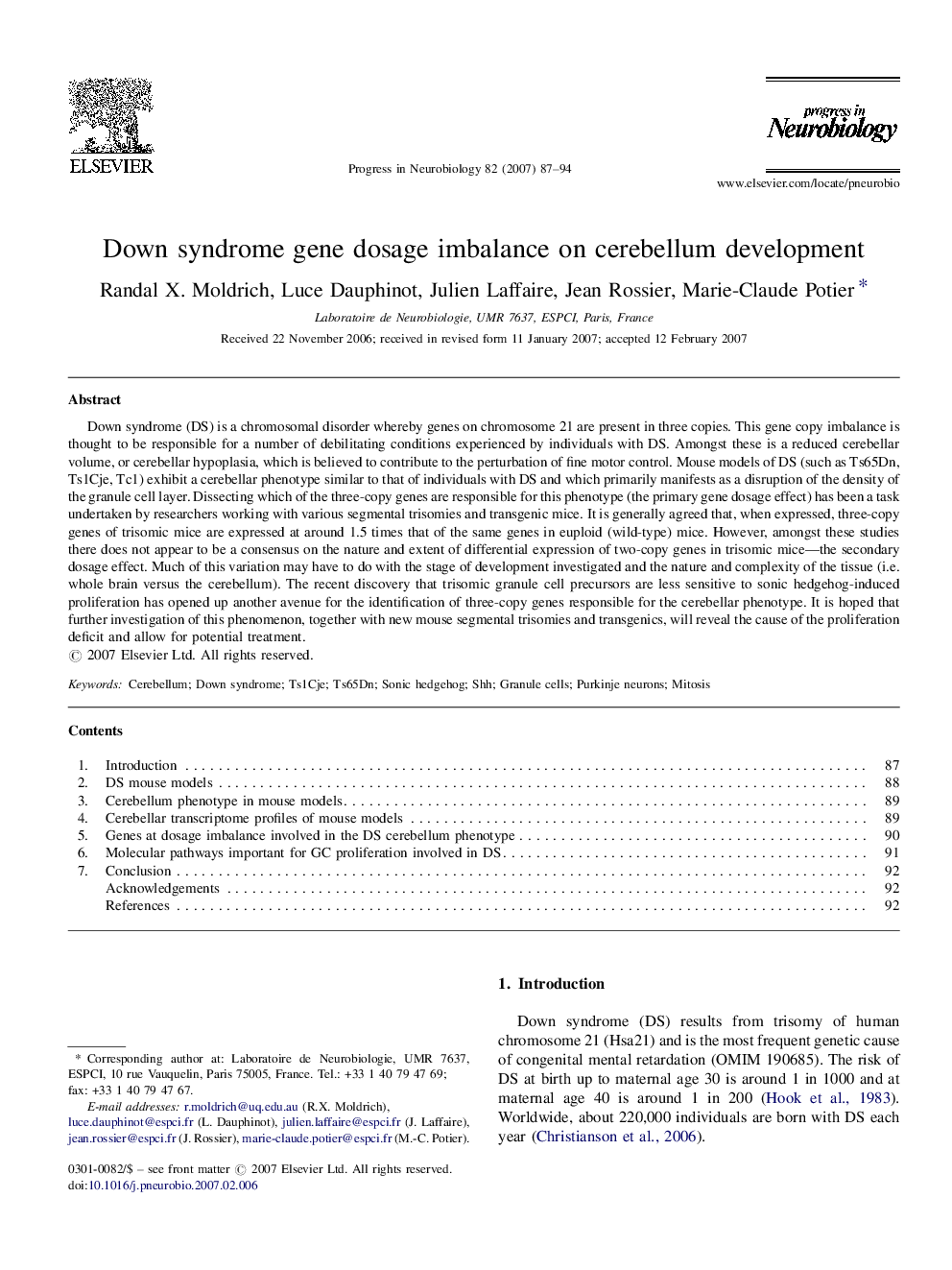| کد مقاله | کد نشریه | سال انتشار | مقاله انگلیسی | نسخه تمام متن |
|---|---|---|---|---|
| 4353914 | 1298519 | 2007 | 8 صفحه PDF | دانلود رایگان |
عنوان انگلیسی مقاله ISI
Down syndrome gene dosage imbalance on cerebellum development
دانلود مقاله + سفارش ترجمه
دانلود مقاله ISI انگلیسی
رایگان برای ایرانیان
کلمات کلیدی
موضوعات مرتبط
علوم زیستی و بیوفناوری
علم عصب شناسی
علوم اعصاب (عمومی)
پیش نمایش صفحه اول مقاله

چکیده انگلیسی
Down syndrome (DS) is a chromosomal disorder whereby genes on chromosome 21 are present in three copies. This gene copy imbalance is thought to be responsible for a number of debilitating conditions experienced by individuals with DS. Amongst these is a reduced cerebellar volume, or cerebellar hypoplasia, which is believed to contribute to the perturbation of fine motor control. Mouse models of DS (such as Ts65Dn, Ts1Cje, Tc1) exhibit a cerebellar phenotype similar to that of individuals with DS and which primarily manifests as a disruption of the density of the granule cell layer. Dissecting which of the three-copy genes are responsible for this phenotype (the primary gene dosage effect) has been a task undertaken by researchers working with various segmental trisomies and transgenic mice. It is generally agreed that, when expressed, three-copy genes of trisomic mice are expressed at around 1.5 times that of the same genes in euploid (wild-type) mice. However, amongst these studies there does not appear to be a consensus on the nature and extent of differential expression of two-copy genes in trisomic mice-the secondary dosage effect. Much of this variation may have to do with the stage of development investigated and the nature and complexity of the tissue (i.e. whole brain versus the cerebellum). The recent discovery that trisomic granule cell precursors are less sensitive to sonic hedgehog-induced proliferation has opened up another avenue for the identification of three-copy genes responsible for the cerebellar phenotype. It is hoped that further investigation of this phenomenon, together with new mouse segmental trisomies and transgenics, will reveal the cause of the proliferation deficit and allow for potential treatment.
ناشر
Database: Elsevier - ScienceDirect (ساینس دایرکت)
Journal: Progress in Neurobiology - Volume 82, Issue 2, June 2007, Pages 87-94
Journal: Progress in Neurobiology - Volume 82, Issue 2, June 2007, Pages 87-94
نویسندگان
Randal X. Moldrich, Luce Dauphinot, Julien Laffaire, Jean Rossier, Marie-Claude Potier,